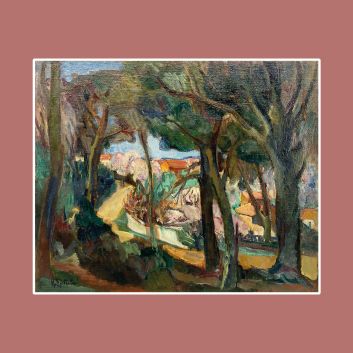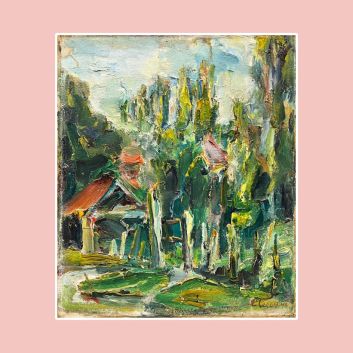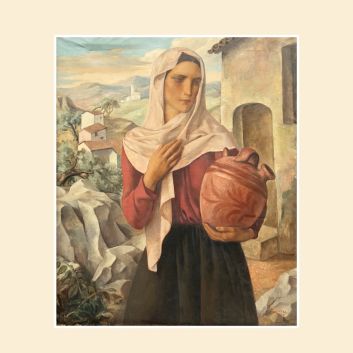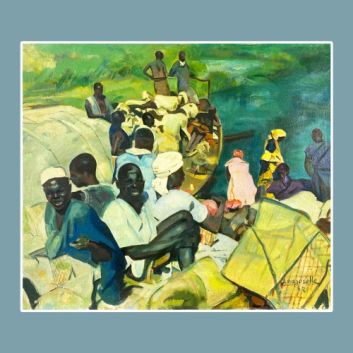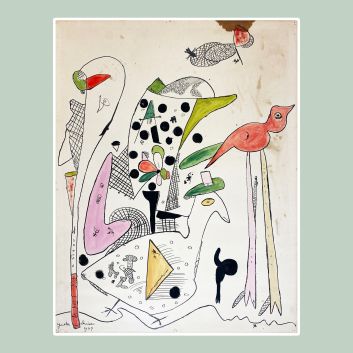Value and quotation, paintings and works by Maurice de Vlaminck
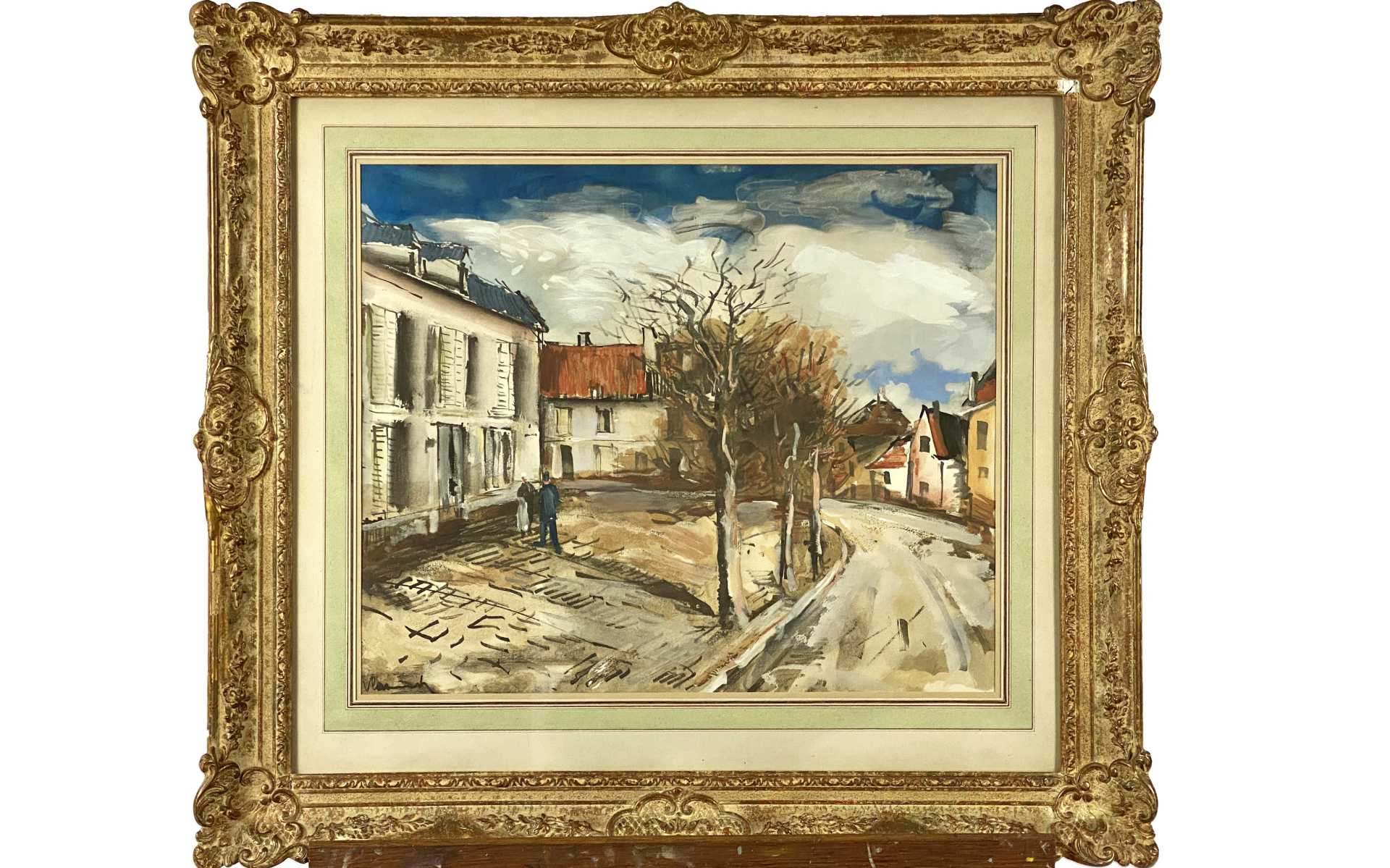
If you own a work by or about Maurice de Vlaminck and would like to know its value, our state-approved experts and auctioneers will be happy to offer you their expert appraisal services.
Our specialists will carry out a free appraisal of your work, and provide you with a precise estimate of its current market value.
Then, if you want to sell your work, we'll point you in the right direction to get the best possible price for it.
Rating and value of the artist Maurice de Vlaminck
Considered one of the pioneers of Fauvism, Maurice de Vlaminck quickly made his mark on twentieth-century art. His legacy can be seen in many media: engravings, drawings and, above all, paintings.
Today, the prices of his works are rising enormously under the auctioneers' gavels.
His creations are particularly sought-after, and the prices at which they sell on the art market range from €100 to €762,000- a considerable range, but one that speaks volumes about the value that can be attributed to Maurice Vlaminck's works.
In 2020, a floral arrangement was sold for €30,630, whereas it was estimated at between €25,000 and €35,000.
Order of value from simplest to most prestigious work
Technical | Estimate |
|---|---|
Lithography | From €100 to €6,000 |
Oil on canvas | From €400 to €762,245 |
Response in less than 24h
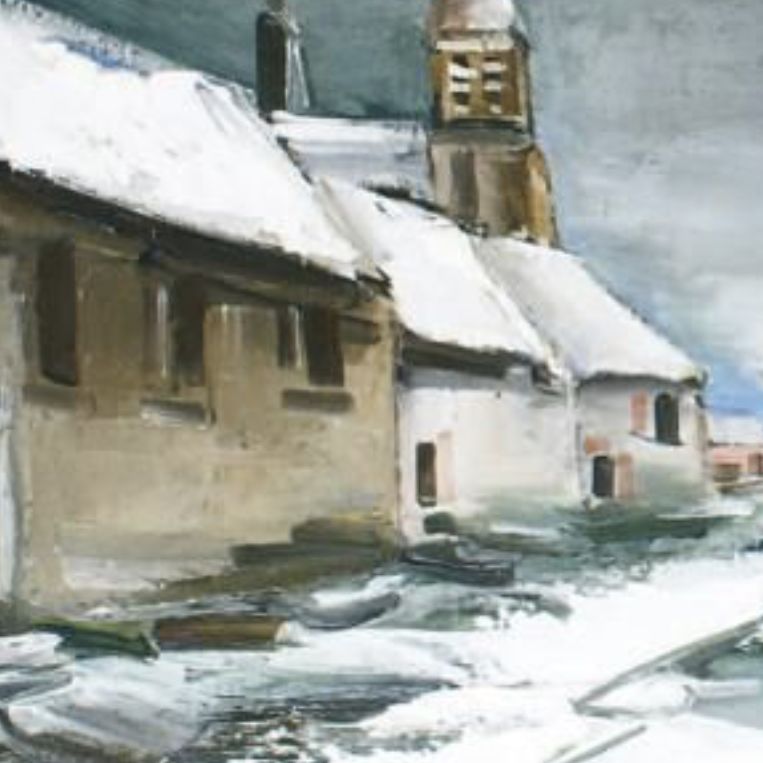

Style and technique of the artist Maurice de Vlaminck
Vlaminck began his career under the influence of the Fauvist and Cubist movements, finding in them a freedom of form and expression that marked his early works. However, a large part of his artistic output is made up of still lifes and landscapes, with a notable impression of Impressionism.
His energetic strokes and bold brushstrokes evoke the spontaneity of gesture, while his vibrant palette comes alive with chromatic lyricism, recalling Claude Monet's subtle treatment of light and nuance.
Vlaminck never hesitates to explore striking contrasts, combining a fierce modernity with a certain attachment to tradition, making his work a captivating synthesis of innovation and heritage.
Vlaminck's life
Maurice de Vlaminck, whose real name was Maurice Edmond Devlaeminck (1876-1958), is a key figure in 20th-century art. Born in Paris, he spent his entire life there, developing a deep attachment to his urban roots.
A prolific painter, he is particularly renowned for his landscapes, but is also interested in nudes. Although his work with ceramics is less well known, he also explores this art form.
Vlaminck didn't limit himself to painting: a committed writer, he published several theoretical essays on art, contributing to reflection on the artistic movements of his time.
His fame was partly due to the influence of his brother-in-law, an influential Parisian journalist, who introduced him to artistic circles. From an early age, Vlaminck received training in painting, inspired by a local artist who lived nearby.
He married Suzanne de Verly just as he began his career, which extended far beyond painting to include music and cycling, his other passions. At the time, he was still unable to make a living from his art.
His meeting with André Derain marked a turning point: a deep friendship was born between them, each influencing the other's work.
In 1905, he took part in the first Salon des Indépendants in Paris, where he was part of "la cage aux fauves", along with André Derain, Louis Valtat and Charles Camoinand other major Fauvist artists. Together, they pioneered a new artistic era, laying the foundations for contemporary art.
Vlaminck soon made friends with art dealers Ambroise Vollard and Daniel-Henry Kahnweiler, who gave him international exposure.
However, his career slowed down with the outbreak of the First World War. Although he was not sent to the front, due to his family situation with three daughters, he was assigned to a factory.
His career continued successfully until the Second World War, when he joined the Resistance, firmly opposing the likes of Louis-Ferdinand Céline.
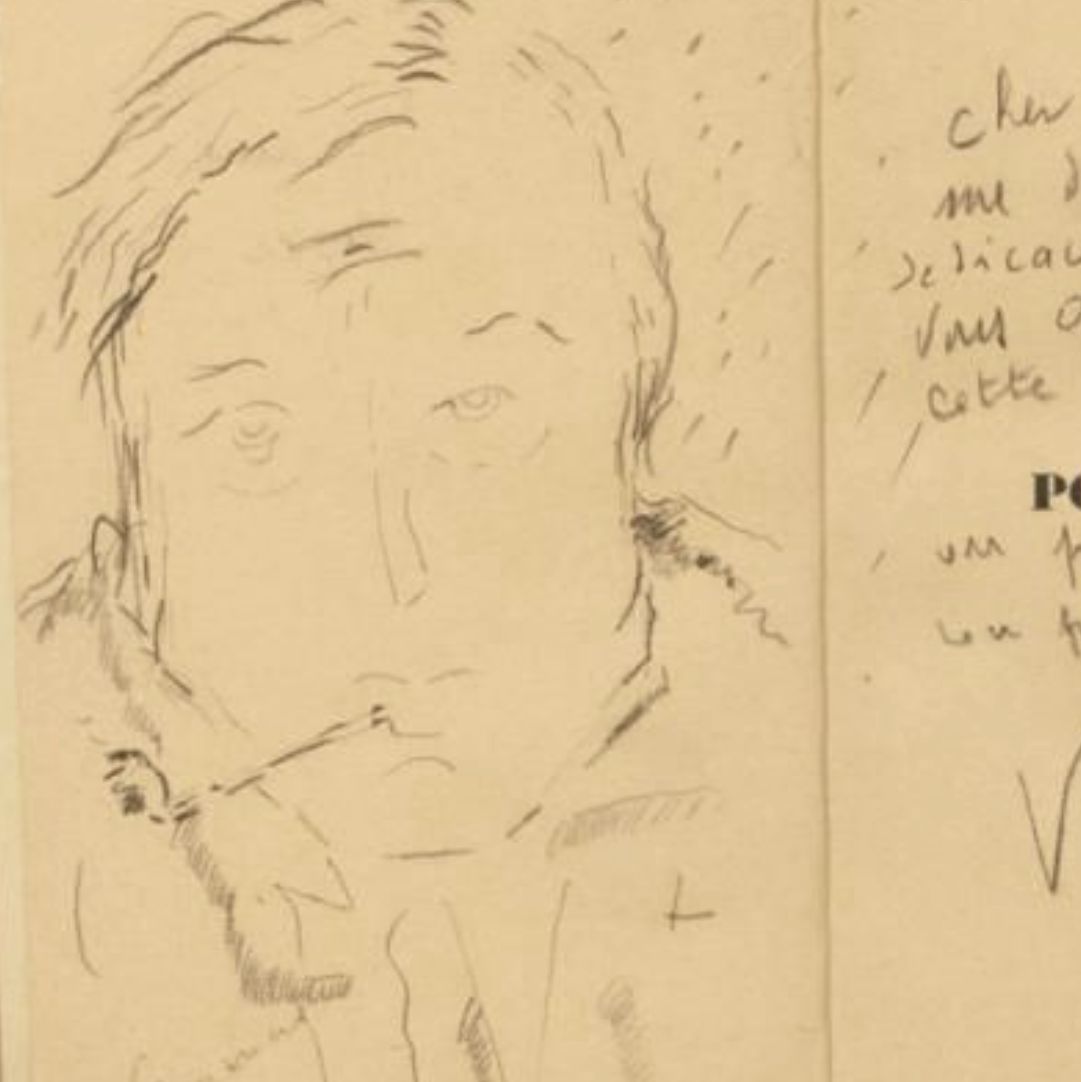

Focus on the cover painting by Maurice de Vlaminck
Maurice de Vlaminck, often recognized for his powerful, emotionally-charged landscapes, delivers here a village scene under a dramatic sky, capturing with intensity the tranquility and tension of a place frozen in time.
True to his fauve style, the artist does not seek to represent the world as it is, but to translate an impression, a raw emotion through color and form.
The picture opens onto a deserted, curving street, lined with houses with closed shutters, evidence of a quiet but inward-looking life. The buildings, painted in neutral, matte tones, seem crushed by the weight of the sky, almost threatening in their simplicity.
The sky becomes one of the central elements of the composition. In perpetual motion, it is criss-crossed by heavy clouds, at once dark and luminous, where bright blue peeks through here and there, like a glimmer of hope in this heavy atmosphere.
The cool hues of the sky create a striking contrast with the orange roofs, which almost seem to burst forth in this otherwise subdued palette.
The trees, for their part, raise their bare branches to the immensity of the sky, creating a kind of silent dialogue between earth and air. They are both witnesses and actors, their bareness symbolizing winter and the solitude of the place.
Everything in this scene seems to be asleep, almost frozen, and yet every element contributes to creating a latent tension. We feel the weight of silence, waiting for the wind or the passing of a wagon, for noises to break the stillness.
Human presence is minimal, reduced to two small, blurred silhouettes in the center of the image, almost anonymous. These figures are merely passing through, lost in the immensity of the scenery.
They do not interact with their environment; it dominates them entirely. The work suggests that man, though present, remains secondary, insignificant in the face of nature and the forces it deploys.
This theme, dear to Vlaminck, returns here with force: man is only a tiny part of a much larger, indomitable world.
The play of light in this work is particularly interesting. The long, sharp shadows cast on the ground contrast with the flashes of light illuminating some of the facades, accentuating the depth of the composition and giving an impression of relief and movement, despite the apparent stillness of the scene.
Ultimately, Vlaminck captures here not only the cold beauty of a rural village, but also the immensity of a nature that, without being threatening, imposes its presence.
The painter plays on this tension between calm and menace, solitude and serenity, where every detail, every brushstroke, contributes to creating an immersive, almost palpable atmosphere.
It's not just a visual representation, but a poetic translation of the soul of a place, where the viewer is invited to feel the very essence of this silent confrontation between man and his environment.
With this work, Maurice de Vlaminck once again demonstrates his talent for capturing the ephemeral moment, that suspended moment between calm and agitation, when everything seems to be in precarious equilibrium.
The soft, diffused light slips through the threatening clouds, as if to remind us that, even in the harshness of winter, there is always a promise of renewal.
A minute with Maurice de Vlaminck
The legacy of Maurice de Vlaminck
Vlaminck is an artist deeply rooted in his time, whose work bears witness to an artistic evolution in phase with the great upheavals of the 20th century.
As a pioneer of Fauvism, he played an active part in the revolution in contemporary art, alongside the early Fauvists who broke with academic conventions and opened the way to a new freedom of expression.
His rich and diverse output reflects the evolution of the century. Towards the end of his career, his work took on darker overtones, with marked expressionist touches, reflecting a heightened emotional intensity.
Like Wassily Kandinsky, Vlaminck explored color in depth, making it a vehicle for emotion and abstraction. For him, color becomes not only a means of representing reality, but also of expressing the invisible, of capturing states of mind.
Alongside his pictorial work, he published theoretical essays on art that would have a lasting influence on his contemporaries and future generations of painters.
His reflections, while rooted in his personal experience of painting, helped redefine the way art was conceived and its relationship with the viewer. Vlaminck's legacy thus remains that of a visionary artist, who shaped the contours of modern art.
Recognizing the artist's signature
Vlaminck's works are often signed, and his signature can vary from year to year. It can also be found on manuscripts. However, he was and is much copied, which is why it's important to have your work appraised.

Knowing the value of a work
If you happen to own a painting by or after Maurice de Vlaminck, don't hesitate to ask for a free estimate using the form on our website.
A member of our team of experts and certified auctioneers will contact you promptly to provide you with an estimate of the market value of your work, as well as any relevant information about it.
If you're thinking of selling your work of art, our specialists will also be on hand to help you find alternatives for selling it at the best possible price, taking market trends into account.
Response in less than 24h
Related topics
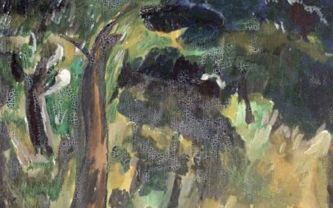
Rating and value of works of art, drawings, paintings...
André Dunoyer de Segonzac is a twentieth-century neo-realist artist who produced paintings, watercolors and prints that are highly prized and sought-after.
Read more >
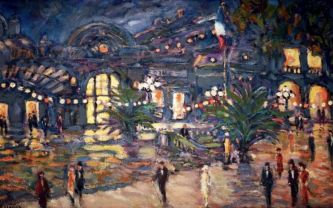
Rating and value of paintings and drawings by Constanti...
Constantin Korovine was a Russian post-impressionist painter who produced drawings and oils on canvas that were sought-after and appreciated at auction.
Read more >
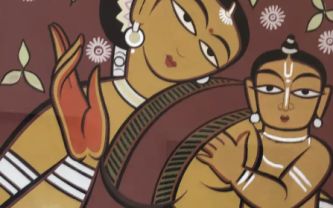
Rating and 2024 value of paintings by Jami...
Jamini Roy is a modern Indian painter of the 20th century who has produced works that are highly rated and valued at auction.
Read more >
Secure site, anonymity preserved
State-approved auctioneer and expert
Free, certified estimates
